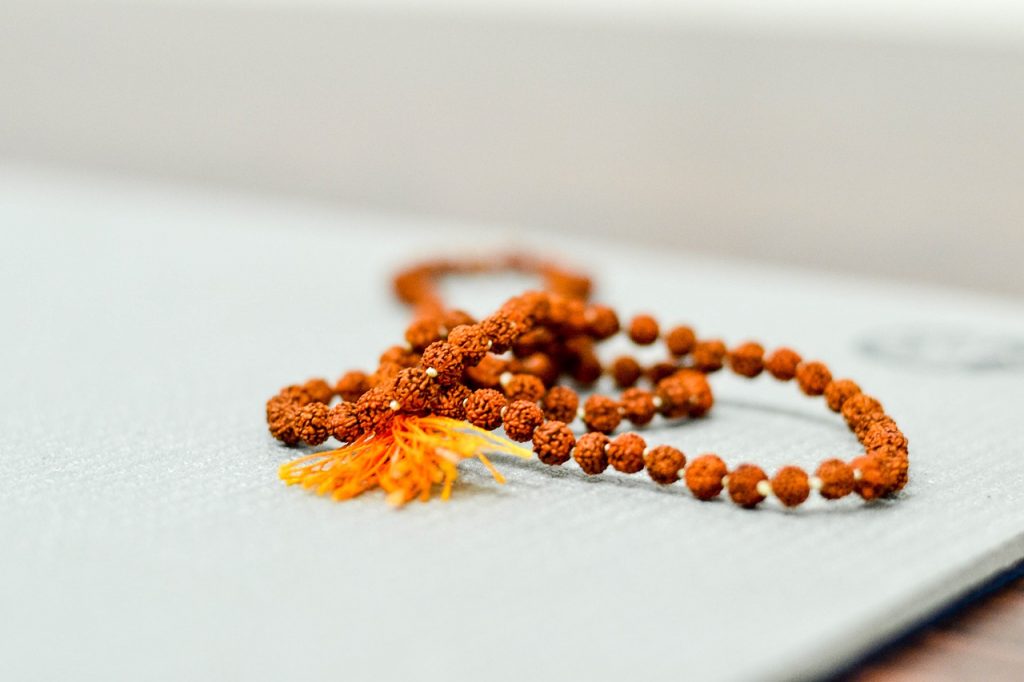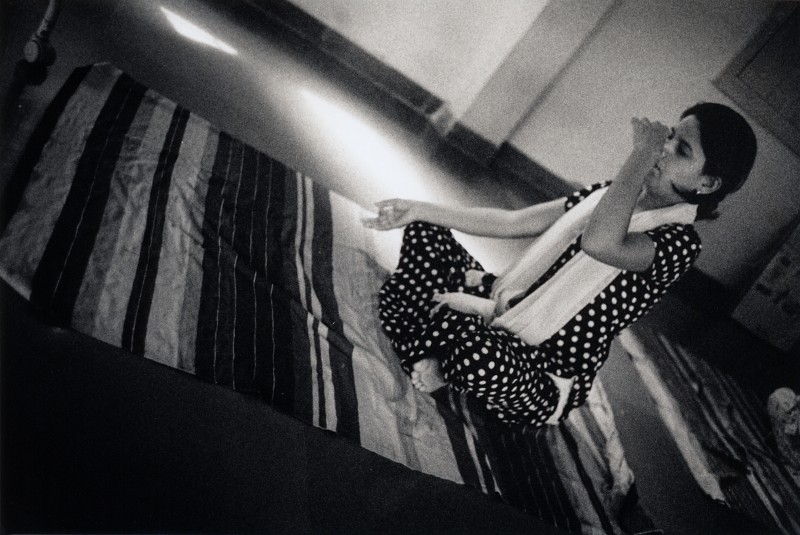Vedic remedies in astrology: upāyas & pariharas
Remedies are an integral part of Vedic astrology. There exist countless remedies, but they can be categorised into two types: upāyas and pariharas.
In Sanskrit, the word ‘upāya‘ is translated as a ‘mean’, ‘way’ or ‘process'[1]For translations of ‘upāya‘ see Online Sanskrit Dictionary and in Buddhism it is used in similar terms though the accent lies more on remedies being a false mean to get to the truth.. Upāyas can help one to get strong enough to deal with a problem or provide the necessary help in dealing with it.
For example, building a robust immunity can help dealing with a chronic disease or challenging circumstances. Also, if some has an injured knee, a physiotherapist sometimes advices to keep the muscles around it very flexible. In other cases upayās can help with providing the right help for things that go beyond our capacity. For example, by providing the good lawyer to deal with something so that we don’t have to deal with it ourselves anymore.
Pariharas are remedies that solve the problem itself. The word itself has many meanings in Sanskrit among which: to be given up or delivered, to be discontinued, privilege, immunity, moving around and avoiding or leaning alone[2]http://sanskritdictionary.com/parihara/9815/2.
The meaning here refers to ‘going around’ Hara (a name for Shiva). Circumambulation is a way to show reference and devotion to the divine. And by going around the problem with reference to Lord Shiva the problem gets solved, or left alone and then it dissolves on its own. In this line, remedies can help one also to really cure a disease or to finish up with other karmic problem that one is facing.
Often people approach astrologers to either get solutions for problems or fulfillment of heartfelt desires. Whether these have a more material or spiritual focus, remedies can help. In this article, we will explore how we can transform these upāyas into profound spiritual practices, which can help to increase both our inner joy and external success.
The average reading time of this entire article is 12 minutes. The text includes examples of remedial measures and detailed explanations of how they work, as well in alleviating karma and in uplifting us spiritually.
If you are only looking for info on particular remedies, you may also go straight to the main headers of this article:
- The three gunas and types of karma in astrology.
- How do astrological remedies work?
- Mantras, rituals and meditations as sattvic remedies.
- Donations as rajasic remedies with sattvic potentials.
- Gemstones as tamasic remedies with sattvic potentials.
- Ayurvedic remedies in Vedic astrology.
- Other astrological remedies (Lal Kitab and more).
Astrological remedies: for what are they really?
Though astrology has always been used for many mundane aspects of life, I do see Vedic astrology primarily as a spiritual teaching. This is because there is existentially no difference between spiritual and mundane life.
Every effort to achieve something in the world can enrich one’s spiritual life and visa versa. Vedic astrology is an excellent guide to provide the right tools to bridge these sometimes seemingly opposite fields.
The apparent contradictions are only based on our attitude and conceptual thinking. Integrating upāyas in our life is a beautiful opportunity to bring spiritual understanding into mundane areas and visa versa.
After all, many remedies do help to fulfill either basic needs or heartfelt desires for livelihood, wealth, partnerships, career, health, spiritual upliftment etc. And, as the remedies are in essence spiritual practices, they are merging our spiritual and mundane efforts in life. The remedies add strength to our prayers and wishes.
Upāyas were originally meant to alleviate ourselves from karmic shackles we have created for ourselves. There exist many ways and concepts to understand karma. Below I elaborate on these a little bit to explore how to conduct these Vedic remedies in the most uplifting way.
If you would like to know how I prepare a chart reading, please read this other article on some basics in Vedic chart analysis.
The three gunas and types of karma in astrology
The term Vedic of course refers to the Vedas. It is not an easy task to trace back all remedies to their Vedic sources. Moreover, regarding some common remedies in astrology, it is a point of discussion whether they are Vedic or Tantric in origen[3]Unfortunately, some people have given Tantra a bad name, because this tradition has actually a very pure core and contributed a great deal to many current common rituals and beliefs in India and … Continue reading.
In many Indian spiritual perspectives, creation is depicted as a continuous process. In our individual lives we all know that we can’t escape from continuous actions that create effects. As these effects bounce back, we create our own future circumstances. This is commonly known as karma.
Vedic astrology is perhaps the best tool to gain insights in what kind of karmas we have created for ourselves. The concept of the three ‘gunas’ or ‘attributes’ is a useful tool for this.
According to many Indian traditions, all energies in life can be categorized into three types of gunas: tamasic, rajasic and sattvic. Also all our actions fall into these categories and create corresponsive karmas.
Tamas guna is an inert type of energy representing deep rest or stagnancy. It can cause destruction and in human life it can manifest as depression, inertness or a state where one is merely craving for sense pleasures. Harmful actions conducted out of ignorance bring forth more karma related to these tamasic tendencies.
Rajas guna represents activity and change. In extremes it can become restless and chaotic. It represents states of activity where we are trying to achieve goals in life, while we remain strongly attached to the results. In a karmic sense, we create more of these rajasic tendencies by taking advantage of others with mere selfish motives.
Sattvic is a calm, serene, alert and harmonious state of consciousness. In this state our divine qualities shine forth most easily. Actions with pure and selfless motives create more of this sattva guna[4]http://vedavyasacenter.org/teachers/freedom-cole/opening-lecture/.
All of manifestation comprise of these three attributes. These ‘gunas’ are in a sense causing a continuous process of creation on karmic level at least.
In Vedic astrology we study someone’s karmic legacy. All that we see in a chart are the tendencies that spring forth from the previous actions of an individual.
By trying to find happiness and freedom in life most of humanity is on a similar quest in life. Many of us end up searching within the realm of these three gunas. However, Krishna shares with us:
“All around, actions are being done by the guṇas of prakṛti. Confused by self-consciousness, one might think: “I’m the doer”.”
Bhagavad Gita, chapter 14
Eventually we have to transcend the realm of the gunas to make a final leap towards final liberation[5]See also this lecture of Pandit Sanjay Rath: http://vedavyasacenter.org/teachers/freedom-cole/opening-lecture/. In the section about donations, I share a bit on how we can move beyond what Krisha calls self-consciousness and that feeling of “I’m the doer”.
Our true essence lies beyond these gunas into a realm of pure consciousness-bliss. The experience of our beyondness is more easily realized in sattva guna. Therefore, most spiritual practices aim to enhance this guna.

How do Vedic astrological remedies work?
It is very common that some undesirable tendencies (for example: depresion, hypertension, stress, greed or selfishness) persists even though we try to overcome them by will-power.
Deeply-rooted tendencies are called vāsanās in the Indian tradition. They manifest on the surface of our behaviour, but are rooted in unconscious parts of our minds (or soul). Interestingly, we also seem to attract situations that correspond with these vāsanās. In this sense, they do not only manifest in our own behavior, but also in the people and circumstances we attract in life.
Many people report that they experience their lives going through very similar cycles of experiences again and again. For example, some may go through the same issues in work situations, others within their families and others get physically or mentally sick again and again.
What is causing these cycles in experiencing? Karma? Yes, that is the easy answer, but how does this work in practice? Many of us make either assumptions or ask ourselves questions like:
- Do we attract exactly those experiences that corresponds with an energetic vibration that we carry deep within ourselves?
- Are these repeated experience really the most ideal learning situations for us?
- And, if we are fed up with these experiences, how can we accelerate our learning and evolve to a fresher encounter with life?
Some believe that positive affirmations and happy thinking can solve it all! I too believe it has a power. However, as we are speaking about learning and evolution of some deep soul level, I have not seen this always solving the issues. These vāsanās are often rooted in deeper layers as where these affirmations reach. And the here meant deeper subconscious levels do affect our behaviour, personality and experience up to a large extent.
Vedic astrology gives very profound guidance on how to balance and alter these deeper-rooted unconscious vibrations within ourselves. For example:
- With mantras these vibrations can be literally shaked out.
- Meditations can help us to observe inner and external situations with more clarity. In the light of pure witnessing negativity cannot persist.
- Donations or volunteer work can initiate another flow of energy within the universe and, according to the karmic theory, will return to us in one way or another.
Though any meditation or mantra can give benefits, the power of Vedic astrology lies in prescribing practices that fit very well with an individual context. They are aimed to treat the specific tendencies that arise for someone. These can be either diseases, behaviour traits, but also, for example, magnetic forces between certain people.
It is important to keep in mind that the Vedic remedies need not to be solely focussed on negativities. The upāyas can also aim at unfolding one’s positive qualities.
Remedies in Vedic astrology can be divided into three types of remedies based on the gunas. However, the actual effect of a Vedic remedy always depends on the attitude of the individual.
Additionally, as Ayurveda and Vedic astrology are very much related, I have added a specific paragraph about the potential of medical astrology and Ayurvedic remedies.
Mantras, rituals and meditations as sattvic Vedic remedies
Mantras to shake-off karmic imprints
Mantras, rituals and meditations are usually described as the most sattvic and longest lasting remedies. They have the potential to install sattva guna and therewith counterbalance rajasic and tamasic tendencies.
Mantra sounds can literally shake strong tendencies out of our system. Sounds are ~ of course ~ in the first place vibrations and, therefore, counteract other subtle vibrations within ourselves (like desires, expectations, depression etc.).
All planets, signs and constellations are connected to particular sounds and mantras. These vibrations have the power to re-align the energies that the planets represent.
For example, if one has problems with planet Mars, a mantra for Hanuman, Bagalamukhi or Skanda helps to counteract these produced effects. Mantra means ‘that which protects’ in Sanskrit and these sounds protect our true self from other influences.
By chanting mantras a certain number of times, they eventually reach our unconscious mind where these deep rooted vāsanās are stored.

There exist various ways to apply mantras. They can be chanting loudly, used silently in meditations, sung in devotional songs, offered one by one to a deity, or be part of a wider ritual.
Yagyas and pujas: ancient Vedic rituals as remedies
Specific rituals called yagyas or pujas can also be prescribed by astrologers. Most of the ancient Vedas contain detailed descriptions of these rituals, which used to take many days and even many months to complete.
Nowadays, many shorter variations are available. These are also called ‘pujas’ and ‘homas’ (fire rituals) and can be dedicated to certain planets or deities. Usually a brahmin or pujari (temple priest) performs these rituals that consist out of offerings of fire, water and specific food woods and so forth. Chanting of specific mantras is an essential part of these rituals.
Does one has to be present while the Puja ritual is performed?
I can only say that I have experienced the power of participating in pujas, but that there is also a power about it without being physically present. If we cannot be there physically to attend, the facilitators should make sure that the priest reads your name and birth star (nakshatra). With this, the priest’s consciousness sees your name, and a divine personal resolve (sankalpa) is included in the puja.
It is common that one gives a donation for a ritual to be performed. This money is supposed to go to charity and to the daily upkeep of the temple. In this sense, this type of remedy also has a donation part (see below).
Meditations to clear the mind
There exist an enormous variety of meditations. Generally meditation helps us to direct our attention to either outward objects, to our breath or to inner visualisations.
On a deeper level, mediations can also help our attention to sink into the source of ourselves (this is often called Self inquiry or jnana vichara or ātma vichār).
Breathing exercises (prāṇāyāma) cane be advised when windy planets like Saturn or Rahu are causing afflictions.

Meditations on deities can be easily connected to all planets and signs. Devotional meditations can help with problems of watery planets like Moon or Venus.
However, it is important to tune any type of practice to the nature of the individual seen in the wider chart (and religion, culture, temperament etc.).
Donations as rajasic Vedic remedies with sattvic potentials
If we have created a strong disbalance in our exchange with society or nature, donations can be a very fruitful remedy.
All planetary energies also correspond to certain foods, colours or other items, for example: Saturn to black sesame seeds and stainless steel. Moreover, all planets are also connected to certain groups of people, for example: Jupiter to priests and the Sun to leaders and government.
In this line, making certain donations to specific people can help restoring this balance of exchange. Similarly, feeding certain animals can propitiate planets as well (For example: feeding fishes for Moon or Rahu).

It is important to always remember that the time-span of the effects of donations is limited. Therefore, if one aspires to use remedies to make a lasting change in life, it is important to give regularly and for longer periods of time. Without this, effects of donations are likely to last for a period of about three months only.
This works in both ways of course: also charitable organizations can only make a lasting impact if they receive our regular support. The importance of a continuous flow of charity is not something new or unknown. In many cultures it has been a common practice to share a certain percentage of one’s income with the poor and needy.
It is always best to exert oneself and participate either physically or mentally in the practice of donating. However, just giving items away to people on the street is often not an efficient strategy to alleviate poverty. Busy life schedules can make it difficult to volunteer regularly at charitable projects.
In these cases, sharing our financial resources will also do. At the end of the day, money or other resources are symbolic for our efforts and energy as well[6]I was touched to find a list of charitable foundations for each planet made by a colleague astrologer. This list gives a good impression on how to practically commit to charity on regular basis for … Continue reading.
Case example: the twelfth house in Vedic astrology: why donations and service as remedies?
If one has planets in the 12th house, donations and selfless service can help a lot in overcoming related problems. This is easy to understand if we get a sense of the nature of the 12th house. As this is the final house of the chart, it is known as the place where we lose everything for the highest purpose of life (liberation).
Every day, when we go to sleep, we also leave everything behind (for a little while in deep sleep at least). Therefore, also sleep is a 12th house matter. Continuing in the line, also the ones we share our bed with, and pleasures derived from this, are included in 12th house matters. Therefore, also spouse and marriage are partly seen from 12th house. Hence, donations of items related to planets in the 12th house and it’s lord can help in finding a spouse[7]See this YouTube of Pandit Sanjay Rath..
It is important to understand the 12th house ‘loss’ in wider perspective though. Loss can mean, for example, a decline in wealth, health, status, personality etc. To reach ultimate liberation within ourselves, it is said that we to go beyond attachments to these areas of life. Therefore, if channeled in the right way, losses indicated by the 12th house can help us to evolve this ultimate goal of life and its eternal bliss.
By dedicating our 12th house themes selflessly to society we, in a sense, proceed the process of loss that would otherwise come to us through the planetary karmic powers.
By doing this voluntarily and out of our initiative, we create a smoother flow compared with that we would wait for karmic processes to force this ‘loss’ upon us.
These donations and selfless actions help training our ability of ‘letting go’ of some attachments and desires.
If a 12th house is somehow afflicted, it is strongly advised to give donations. We can work more internally on these matters by renouncing ideas and positions related to this house in our own horoscope.
If we keep on holding on to that what we have in our 12th house, life tends to create less-comfortable experiences around these losses. And in their turn, the losses can trigger inner reactions of resentment, victimhood or depression. And their turn, these negative feelings may keep us going through another cycle of craving, achieving and losing.
These outer-circumstances of desire, achieving and losing are not the problem in itself. However, subtle attachments to the things we are ought to let go off can create a lot of inner turmoil.
Jyotish can prescribe remedial measures that focus very much on the sensitive points of these imbalances, but it is always up to us to really share from the heart without any expectation for results.
If we expect certain results in return, the giving and sharing is, in essence selfish, and thereby creating more rajas guna. Nevertheless, because it is still a positive exchange of energy, the results can proof to be beneficial for society and oneself (so please keep on going anyway (-;).
Giving and sharing without expectations for returns
If we truly share from the heart without expecting anything in return both our actions and the results therefrom become more sattvic. This is also called ‘seva’, or ‘selfless action’.
In this line, giving and sharing becomes a very subtle form of spiritual practice. The more selfless we share, the more sattvic the results.
However, it cannot be stressed enough that the subtlety of this practice lies in not focussing on the results at all. In this way, giving and sharing becomes a humble offering to existence: We remain de-attached to any reward for it (like someone saying ‘thanks’ or getting a favour or pay in return).
As the rajasic plane of existence is always subject to change, one has to keep in mind that giving donations with selfish motives is not a permanent problem to deep-rooted karma. The time-span of the effects of these remedies is always temporary. Hence, we may, for example, experience relieve of certain life problems for about three months only.
Nevertheless, I would always fully encourage to share and give, even if we have to admit that we still hold subtle selfish motives. This is natural and common these days.
By acknowledging some selfish trashes, we become aware of them. This is always the first step in going beyond a limited mindset. If we practice giving in this way it helps us to become more selfless in our sharing.
Some say that this kind of selfless sharing is only possible when one lives in abundance. Though I feel a truth of this statement, I also feel that de-attachment plays a major role, and that it is very much the question what kind of an abundance we are talking about? Love, energy, food, money, attention, skills?
If we tap into the joy of giving and sharing, all these practices can uplift our spirit in many ways. Is this joy then not selfish as well? Some critics might ask this question. Well, if enjoyment comes naturally, why not let it be there? There is no harm in that. The problems lies in the craving for satisfaction as a results of our actions. If this craving determines our action, it is bound to be selfish and rajasic. Anyway, the results of our actions are always uncertain and dependent on circumstances beyond our control.
In the highest peak of our potential, we can become pure channels of the divine on earth. In this state, there is no “I” that gives or receives.
In such a peak, we will witness only one auspicious flow of natural and divine love which is available for anyone who comes near.
~ May we aspire such a state of being……. ~
Gemstones as tamasic remedies with sattvic potentials
Wearing gemstones is another type of populair Vedic astrological remedy. These stones carry an energetic vibration and the sunlight’s reflection through them amplifies these energies. In this way, wearing gemstones can increase the strength of the particular planetary energy.

The gemstones relate to the body and the body is matter which is tamas guna. Therefore gemstones are considered tamasic remedies. However, by initiating the gemstones with proper mantras, the stones themselves start representing the energetic powers of the planets.
These energetic powers are are deities and hence representations of the divine power on earth. In this sense, these gemstone remedies do have a potential to become more sattvic and lasting in nature.
As in every individual horoscope all planets play different roles, it takes a bit of deliberation to choose the right gemstones. For example, it is often advised not to wear stones of the planets that rule the sixth and eighth house of a horoscope. These are houses of disease, enemies and karma and can strengthen these areas of life.
It is important to remember that wearing a gemstone on its own does not help us to transcend the essential planetary energies. They rather use one particular energy to create more favourable circumstances for us to overcome other issues in life. This can still work very as a very powerful stepping stone in life.
Because the stones do not automatically take up our dharma of transcending our life lessons, these are called tamasic remedies. By combining them with sattvic remedies like mantras and meditations, the gemstone remedies still hold a sattvic potential to help transcending one’s life challenges.
Ayurvedic remedies in Vedic astrology
Vedic astrology has an enormous potential for Ayurveda in particular and medical astrology in general. It has the same roots as Ayurveda, which makes both merge beautifully in any analyses.
For example, Ayurveda’s famous body types are based on the five elements, which also play a a major role in Vedic astrology. All planets and signs also relate to particular elements. Hence, Vedic astrology is also able to ascertain Ayurvedic body types from a birth chart.
Another great feature of Vedic astrology is that it can track the main disease-causing planets. This are often the rulers of the 6th and 8th houses or malefic planets like Saturn and Mars. By seeing what these planets are doing in a chart we can gain insights in the karmic root-causes of diseases. This means that we can alleviate the karmic depth behind sicknesses with remedies.
The houses and signs can reveal the affected body parts and in the Trimshamsha D30 division chart we can even pinpoint the affected doshas (body types: kapha, pitta and/or vata). All together, this can be very helpful in understanding the type of tendencies towards diseases individuals have. By prescribing individual lifestyle advice and home remedies, like diets and herbs, we can counterbalance these tendencies up to a great extent.
Ancient Vedic Astrology scriptures like Brihat Parāśara Hora Shastra do elaborate on disease diagnoses already. Moreover, I have been fortunate to learn also from contemporary experts in both Ayurveda and Vedic astrology. These top scholars combine their profound scriptural knowledge with their extensive research and experience of assessing many thousands of astrological charts.
For example, from Visti Larsen and his lineage of Pandit Sanjay Rath, I have benefited by taking up his health and illnesses course about diagnosis of diseases. In this course, he merges his scriptural study of astrology, Ayurvedic scriptures (like the Charaka Samhita) with his own research on: cancer, diabetes, acne, malaria, Parkinson’s, malaria, sleeping and eating disorders, lyme disease, gall and kidney stones and many more illnesses.
In this line we can advice home remedies, diet recommendations and Vedic remedies, like gemstones and mantras. But how do these Vedic remedies work to help alleviation of diseases?
Some believe that these remedies can trigger the right circumstances to find a specialist that can help. In other cases, the mantras can improve the mind’s power to cope with pain or other effects of the disease.
The remedies may not always work directly on the disease itself, but help by creating ‘cushioning’ circumstances. Moreover, in other cases people experience that some remedies have a ‘mystic’ powers to trigger grace. In its turn, this grace can help in providing some external aids like efficient painkillers or other medicines or treatments. Mostly, they do not cure the disease directly though.
Also the award-winning Ayurvedic doctor and Vedic astrologer, Dr. David Frawley, has added his insights in this field. I was fortunate to obtain his course in Ayurvedic Astrology. He is known for connecting planets to specific herbs[8]To get an idea of the connections between herbs and planets you may want to have a look at Dr. David Frawley’s book on Ayurvedic Astrology: Self-Healing Through the Stars.

Nevertheless, if someone is really chronically or seriously ill, a Vedic astrologer cannot substitute for visits to a doctor. In these cases physical examination is essential. However, Vedic astrologers can still prescribe remedies that can work alongside with regular visits to medical professionals.
Other astrological remedies (Lal Kitab and more)
There also exist a large variety of remedial measures that focus on other exchanges and transformation of energy.
Examples are: dropping certain items in rivers, burying particular items under ground, keeping items in your room, near your bed etc. Many of these remedies are related to an astrological treatisy called Lal Kitab. This text, however, also mentions donations and other remedies. The content of this treatise most probably goes back to folk religions from Persia and Northern India.
I have had some powerful experiences with some Lal Kitab remedies, but also have seen the results fading away again after I stopped the practice. There exist theories that the karmas really disappear if the remedies are practices for a certain amount of time, like 41 days. But who will confirm this?
Will we not celebrate our victory too early? The trust in Vedic sources lies in the Rishis. Burying of items and so are also exchanges of energy, but will they really restore our karmic disbalance with with nature or society? Ans is this not an important part of the ‘outer’ purpose of these remedies (next to their ‘inner’ purification)? I feel to say that, with so much poverty in the world, it is important to also focus on the beneficial aspects of remedies for nature and society.
Another concern that I have with these remedies is the following doubt: as long as the root-causes are not treated within ourselves, will the related karmas not pop-up again, either in this life or a next one? Would this be an efficient way to freedom?
If someone enjoys doing these remedies, why not? They have a power and can create momentary relief of karma, which we can use wisely as stepping stones in our life. Also here, I respect everyone’s path and practice.
Making offers to Holy rivers are an integral part of Vedic practices as well. As long as rivers and soils do not get polluted, I fully love, respect and support every gesture of reference to these great elements and forces of Mother Nature.
I feel that the essence of these practices lies in our innate devotion to the Divine Mother as Nature. This is crucial to obtain the grace of these great Shakti energies within Nature.

The energies of planets relate also to certain part of our house, as well as to our habits and actions. For example, it is said that:
- Dressing up well helps to appropriate Venus.
- Keeping one’s bathing room clean would be good for the Moon.
- Cleaning a sink could help Saturn.
- Cleaning in general is great to appropriate Lakshmi (Venus).
- Cooking food is good for Mars in watery signs.
The same counts for behavioural habits. All planets and signs are known for their more positive and negative traits. For example, being depressed or complaining a lot is often related to Saturn, but maintaining discipline and structure as well.
In this way, astrologers can advice efforts to exchange some negative tendencies into more positive ones. As every planets stands for a particular energy this can help the precision of this type counseling a lot.
In all cases, as long as remedies are merely based on outer circumstances, they are likely to have more rajasic effects.
Striving for sattva is more uplifting and profound in a spiritual sense.
~ Forgetting oneself and dissolving one’s personal sense of being the ‘actor’ is the most profound ~
~ Do not hesitate to book an astrology reading to find out the best remedies for your individual horoscope ~
~ May all beings be happy and free ~
References
| ↑1 | For translations of ‘upāya‘ see Online Sanskrit Dictionary and in Buddhism it is used in similar terms though the accent lies more on remedies being a false mean to get to the truth. |
|---|---|
| ↑2 | http://sanskritdictionary.com/parihara/9815/2 |
| ↑3 | Unfortunately, some people have given Tantra a bad name, because this tradition has actually a very pure core and contributed a great deal to many current common rituals and beliefs in India and beyond (for reference see, for example, the book “Tantra Illuminated“. Vedic culture has influenced Tantra and visa versa, there is no doubt about this. Vedic culture existed first and that is all what I want to say about it. Though it is an interesting discussion, I have chosen to keep this article practical and to the point |
| ↑4 | http://vedavyasacenter.org/teachers/freedom-cole/opening-lecture/ |
| ↑5 | See also this lecture of Pandit Sanjay Rath: http://vedavyasacenter.org/teachers/freedom-cole/opening-lecture/ |
| ↑6 | I was touched to find a list of charitable foundations for each planet made by a colleague astrologer. This list gives a good impression on how to practically commit to charity on regular basis for particular planetary afflictions |
| ↑7 | See this YouTube of Pandit Sanjay Rath. |
| ↑8 | To get an idea of the connections between herbs and planets you may want to have a look at Dr. David Frawley’s book on Ayurvedic Astrology: Self-Healing Through the Stars |



